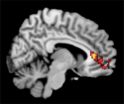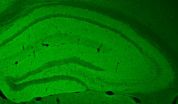Dr Ramaprasad Srinivasan, head of the Molecular Cancer Therapeutics Section, Urologic Oncology Branch, of the National Cancer Institute in Maryland, USA, will tell the 26th EORTC-NCI-AACR [1] Symposium on Molecular Targets and Cancer Therapeutics in Barcelona, Spain, today (Wednesday) that the combination of bevacizumab and erlotinib produced excellent response rates with tolerable side-effects in patients with advanced papillary renal cell carcinoma (pRCC) and in patients with a highly aggressive form of pRCC called hereditary leiomyomatosis and renal cell cancer (HLRCC).
He will say: "The genetic and biochemical events that lead to papillary renal cell carcinoma are different to those that lead to the more common form of kidney cancer, clear cell renal carcinoma. Treatments that are effective in clear cell RCC are not particularly effective in pRCC. Some forms of pRCC, particularly those associated with HLRCC, are characterised by altered cellular metabolism; the tumour cells obtain energy from a process called aerobic glycolysis, and they require high levels of glucose to survive. We believe the combination of erlotinib and bevacizumab may target this particular weakness, at least partly, by impairing glucose delivery to the tumour cells."
Dr Srinivasan and researchers at the NCI Urologic Oncology Branch recruited 41 patients to a phase II clinical trial of 10 mg of bevacizumab per kg of the patient's weight, given intravenously once every two weeks, combined with a 150 mg pill of erlotinib taken orally every day. This was continued until the disease progressed or there were unacceptable toxic side-effects. Twenty patients in the first group had advanced HLRCC and 21 patients in the second group had advanced sporadic (non-hereditary) pRCC [2]. Nineteen of the patients had received at least one previous systemic therapy, such as sunitinib, that had not been successful in preventing their disease progressing.
Dr Srinivasan will tell the Symposium: "Almost all the patients with HLRCC responded with their tumours either shrinking or remaining stable and not progressing. There was an overall response rate of 65%, with 13 patients showing tumour shrinkage of more than 30% and seven patients with stable disease. Many of the responses were long-lasting; some of the patients have remained on the study for three years or more, which is a significant since metastatic HLRCC is uniformly fatal and patients usually die within a year or so.
"Approximately a third of the patients with sporadic pRCC showed very good partial responses, many of which were durable. There was an overall response rate of 29%, with tumours shrinking in six patients and 12 patients with stable disease."
The median length of time that HLRCC patients survived without their disease progressing was 24.2 months, while for the sporadic pRCC patients it was 7.4 months. This compares well with existing survival times for patients on other treatments. "The median progression-free survival for metastatic pRCC appears to be less than six months with most regimens commonly used today," Dr Srinivasan will say. "This is also true for patients with metastatic HLRCC, who generally demonstrate rapidly progressive fatal disease.
"Most patients tolerated treatments well and continue to enjoy a good quality of life, including many who continue to work in their daily jobs."
Side-effects were mostly mild or moderate and included high blood pressure, acne, proteinuria (excess protein in urine) and fatigue, which could be managed effectively with drugs or other supportive measures. One patient died from a gastrointestinal haemorrhage, which may have been related to the bevacizumab. "Haemorrhage, including gastrointestinal haemorrhage, is a well-known complication of bevacizumab; serious gastrointestinal haemorrhage is rare, as is the risk of dying from bleeding. Patients on this medication are monitored closely for signs of bleeding."
He will conclude: "The combination of erlotinib and bevacizumab for treating patients with advanced pRCC shows excellent response rates with tolerable side-effects. This is particularly true of patients with HLRCC. The current data are sufficiently encouraging for this combination to be explored further in larger trials as a possible standard of care treatment for pRCC patients. We are in the process of designing these studies. It is also important to try and identify specific subgroups of patients most likely to benefit from this regimen and our group is working on this issue."
Kidney cancer is the ninth most common cancer in the world, with 220,000 people developing it and over 90,000 dying from it every year worldwide. There are several different forms of kidney cancer and pRCC accounts for approximately 10-15% of cases. HLRCC, which is a familial form of type two papillary renal cancer, has only recently been recognised as disease entity and so incidence is difficult to assess, with estimates that it might account for one to four percent of kidney cancers - a figure that may rise as doctors get better at recognising it. It is caused by inherited mutations in the fumarate hydratase (FH) gene, which plays a role in controlling the way cells use oxygen to generate energy. Once pRCC (whether sporadic or HLRCC) has spread to other parts of the body it is incurable with no standard of care therapy.
Dr Lee Helman, a member of the scientific committee for the EORTC-NCI-AACR Symposium and scientific director for the Clinical Research Center for Cancer Research at the NCI, who was not involved with the study, commented: "This study is an excellent example of a novel, mechanistic-based approach to cancer therapy. It is now well established that kidney cancer can be subtyped into a variety of diseases, one of which is known as papillary renal cancer (pRCC). This group has identified that HLRCC-associated kidney cancer, known as type two pRCC, is a highly aggressive form of kidney cancer, which is characterised by mutations in fumarate hydratase (FH), the gene for a Krebs cycle enzyme required for normal respiration and energy generation. They have shown that these FH-deficient tumours have a metabolic shift to dependence on higher glucose consumption using aerobic glycolysis. Based on this metabolic derangement, they hypothesised that blocking tumour vasculature with bevacizumab, plus potentially inhibiting glucose transport through EGFR blockade, might effectively target the unique metabolic requirements of these tumours. And this is indeed the case, with an overall response rate of about 65% in patients with the FH-deficient subtype of pRCC. Interestingly, 29% of patients with sporadic pRCC also responded, suggesting this combination has activity beyond simply targeting FH-deficient tumour cells."
INFORMATION:
[1] EORTC [European Organisation for Research and Treatment of Cancer, NCI [National Cancer Institute], AACR [American Association for Cancer Research].
[2] Advanced disease was defined as patients with stage 4 or metastatic disease, and patients with cancer in their lymph nodes that could not be surgically removed.



